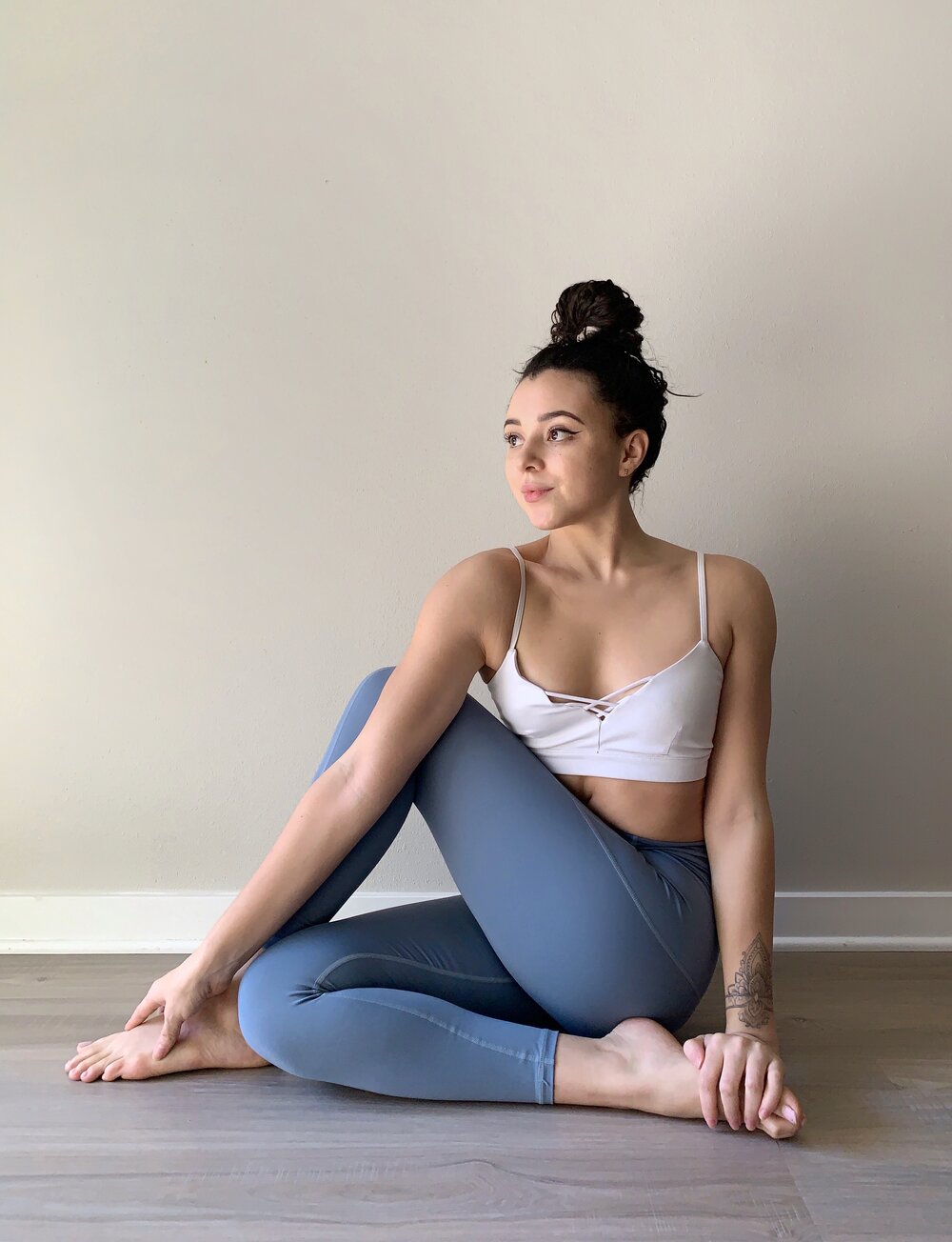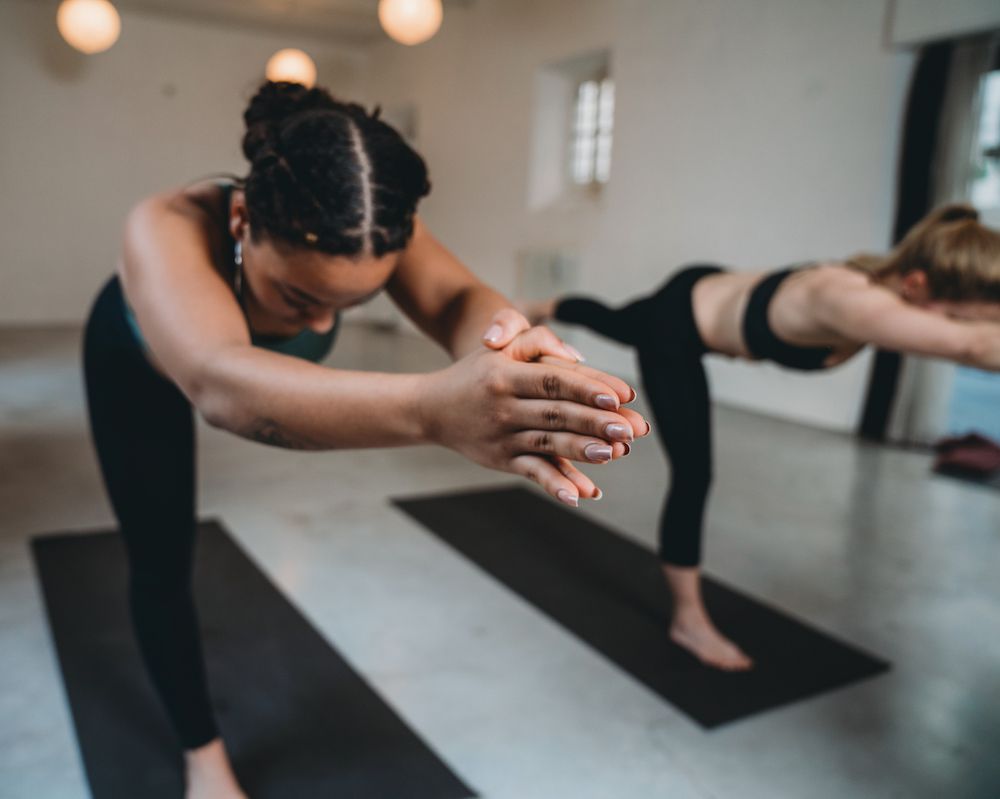
There are many types and styles of Hatha Yoga. Ashtanga yoga and Iyengar form are the most commonly used. Both have specific benefits such as lower resting heart rate. Both require flexibility and strength, and both are physically demanding. Many other movements, such as dance and martial arts, influence these styles. Find a yoga studio or gym offering both styles of classes to get you started.
The B.K.S. The Iyengar Style is defined by its focus on precise physical alignment. Iyengar's strict teaching style often makes this style "drill sergeant like". This style allows students of all skill levels and abilities to stay in positions for longer durations of time. This style of Hatha Yoga is beneficial for beginners, regardless of its style.

The tree pose is a very popular pose in the modern Hatha yoga community. Although the pose can be difficult for novices, it is very easy for experienced practitioners. This posture fosters presence and focus. This posture activates the energy grounding (or udana vyu) and elevates the consciousness. Another variation is the seated spine twist. This allows you to realign your vertebrae and open your hips and chest.
Iyengar yoga is one of the earliest forms hatha yoga. Its roots can be traced back to Swami Sivananda, a Hindu spiritual teacher. The classes usually start with a relaxed posture called savasana. Next, they move to breathing exercises or the sun salutation. It is great for beginners, and it promotes overall well-being. It can be done by anyone, so it is a great choice for all ages and abilities.
The eightfolds in yoga form an integrated system of mind, body, and spirit. It is said that it can help people reduce their consciousness and increase their energy to allow them to live in harmony within the world. Hatha yoga's fundamental goal is to connect the mind and body by breathing. The mind and body can become one by focusing on the breath. This allows the whole body to function as one unit.

Vinyasa refers to another type of Hatha yoga. This style involves linking postures that are similar. This practice involves repeated movements that are connected to the breathing. As a result, most vinyasa teachers use variations and sequencing to make the poses flow smoothly from one to the next. This type of Hatha Yoga is very easy to learn. However, you will need to know how to do the asanas.
FAQ
Which dietary supplement is good for weight loss?
Exercise and diet are key to losing weight. Some people find that supplements can help them along the journey.
Some studies suggest that omega-3 fatty acids may help with weight loss. Omega-3 fatty acid is an essential fat that is important for brain function as well as cell membrane integrity. They can be found as a part of seafood such as tuna, salmon, shrimp, and cod live oil.
Green tea is being studied for its potential benefits in weight loss. Green tea is rich in catechins, antioxidants which may boost metabolism and aid weight loss.
How to Lose Belly Fat Fast
There are several ways to reduce belly fat fast. One way to reduce belly fat fast is to eat less food, and drink lots of fluids.
A second way to boost your metabolism is by running and swimming.
You should avoid sitting for too long if you want to quickly lose belly fat. Stand up often throughout the day. This will help you lose more calories.
If you are having trouble losing belly weight despite trying all of these methods, there is another way.
This involves using a device called a belt. When you sit down, the belt tightens around your waist.
This will make you feel uncomfortable and allow you to move about. This forces you to burn more calories and reduces your belly fat.
Eggs are good for us.
The egg has all the nutrients the body requires. It aids in maintaining strong bones, healthy hearts, and lungs, as it also maintains stable blood pressure.
Eggs are an excellent source of protein, vitamins A, B12, D, E, K, calcium, phosphorus, iron, zinc, copper, magnesium, selenium, and riboflavin.
The egg yolk has high cholesterol. However, it does not contain saturated fat. Eggs have less saturated fat than many other foods.
They are also low in calories and sodium. You can make them in any way you like. They can be fried, poached, scrambled, boiled, hard-boil and baked.
They are delicious and very easy to prepare.
Aim to eat two whole eggs per week. You should eat eggs if you are allergic to them.
Essential nutrients are provided by eggs. Try adding them to your daily diet today.
Which order is best for working out?
It all depends upon what you are trying to achieve. If you want to build muscle mass, then do heavy weights first. Then, move on to cardio. Next, if you're looking to lose weight then switch to strength training.
If you just want to burn fat, start by doing cardio. You can then add strength training.
If you are looking for muscle mass, cardio should be your last option. Cardio stimulates growth hormones and helps build muscle mass.
Also, eat before you workout. This will fuel your muscles and make them work harder. Plus, it makes you feel better during your workout.
Is Cardio Better Than Strength Training?
Both are equally great. Cardio is better if you are looking to build muscle faster.
Cardio burns more calories in a minute than strength training and more fat.
Strength training builds muscle mass, but it takes longer to achieve this goal than cardio.
Statistics
- The PRS enabled risk stratification for overall prostate cancer and lethal disease with a four-fold difference between men in the highest and lowest quartiles (HR, 4.32; 95% confidence interval [CI], 3.16-5.89). (pubmed.ncbi.nlm.nih.gov)
- An estimated calorie range for moderately active adult males falls between 2,200 to 2,800 calories per day, depending on age. (eatright.org)
- Candidates and applicants must pass all four tests at 70% (minimum level) to graduate from Basic Deputy U.S. Marshal (BDUSM) Training. (usmarshals.gov)
- By John Thompson Take a whopping 38% off a set of PowerBlock Pros. (menshealth.com)
- Cardmembers earn 5% Back at Amazon.com with a Prime Credit Card. (amazon.com)
External Links
How To
What should I eat before going to the gym?
For weight loss, you should eat fewer calories per day than you burn during exercise. All your nutrients must be consumed.
This includes protein and carbohydrates as well as fats, vitamins, and minerals.
You can do this by eating smaller meals throughout your day instead of three large ones.
You may not be as effective if there is too much hunger during your workouts.
Consider drinking water rather than sugary energy drinks. This helps keep you hydrated and energized.
But make sure you're getting enough fluids. Over-consuming water could cause your body to lose its electrolytes.
Electrolytes are essential for the body's proper functioning.
Sports drinks are an option if you don't have water. They can be rich in minerals like sodium, potassium or calcium.
These electrolytes can be replenished by this method. These won't, however, replace the sweat you lose from exercising.
If you're worried about losing too much salt during exercise, you could take a multivitamin pill.
These contain extra vitamin B6 which helps regulate the amount of sodium in your body.
You shouldn't depend on supplements if there isn't enough salt in the food or drinks you consume.
They aren't regulated by the Food and Drug Administration (FDA).
One example is that some sports drinks contain more sodium.
Some sports drinks may even contain artificial sweeteners or preservatives. These can cause problems with the digestive system.
If you're concerned about salt intake, sea salt could be used.
It contains fewer chemicals then table salt.
Sea salt is low in iodine as another mineral necessary for healthy thyroid function.